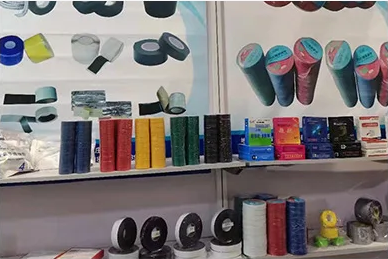Understanding 20mm Intumescent Strips A Key to Fire Safety
In the realm of fire safety and prevention, intumescent strips play a vital role. Among the various sizes of these strips, the 20mm intumescent strip has gained particular attention due to its effectiveness and versatility in various applications. Understanding what these strips are, how they function, and their importance can provide valuable insights for architects, builders, and safety professionals.
What Are Intumescent Strips?
Intumescent strips are fire-resistant materials designed to respond to heat by expanding significantly. When exposed to high temperatures, typically during a fire, these strips swell up and create a barrier that can help prevent the spread of flames and smoke. The 20mm variant refers to the width of the strip, which makes it suitable for a variety of door frames, window frames, and other gaps in buildings where fire and smoke could enter.
How Do They Work?
The primary mechanism behind intumescent strips lies in their chemical composition. When subjected to temperatures above 200°C (approximately 392°F), the material undergoes a physical change, expanding up to four or five times its original size. This expansion fills gaps and seals off openings that would otherwise allow fire and smoke to travel, thereby containing a fire to the area in which it originated.
Applications
The 20mm intumescent strip is commonly used in several key applications
20mm intumescent strip

1. Fire Doors Installed around the edges of fire-rated doors, these strips ensure that, in the event of a fire, the door can close tightly and function as a barrier to smoke and flames.
2. Window Frames Similar to their use in doors, these strips help protect window openings, which can also be points of vulnerability during a fire.
3. Construction Gaps Gaps around pipes, cables, and ducts that pass through fire-rated walls are often sealed with intumescent strips to maintain the integrity of fire barriers.
Benefits of 20mm Intumescent Strips
One of the primary benefits of using 20mm intumescent strips is their ability to enhance fire rating and compliance with safety regulations. Buildings equipped with these strips can help ensure the safety of occupants by minimizing the risk of fire spread. Furthermore, they are relatively easy to install and can be incorporated into new builds or retrofitted in existing structures.
Conclusion
In summary, the 20mm intumescent strip is an indispensable component of modern fire safety systems. Its ability to expand and create effective barriers against heat, smoke, and flames makes it crucial for protecting properties and lives. With ongoing developments in fire safety technologies, the importance of such materials will likely continue to grow, making them essential for anyone involved in construction and building maintenance. By understanding and utilizing these safety features, we can work towards safer environments for everyone.
-
Self Amalgamating Tape: Redefining Electrical Insulation and ProtectionNewsAug.07,2025
-
Seal Strip Solutions: Revolutionizing Energy Efficiency and Comfort in Modern BuildingsNewsAug.07,2025
-
High Voltage Electrical Tape: Powering Safety and Reliability in Modern InstallationsNewsAug.07,2025
-
Flex Tape Waterproof: Transforming the Future of Instant RepairsNewsAug.07,2025
-
Elevate Electrical Safety Standards with High-Performance PVC Electrical TapeNewsAug.07,2025
-
Butyl Rubber Tape: The Ultimate Solution for Reliable Sealing and WaterproofingNewsAug.07,2025
